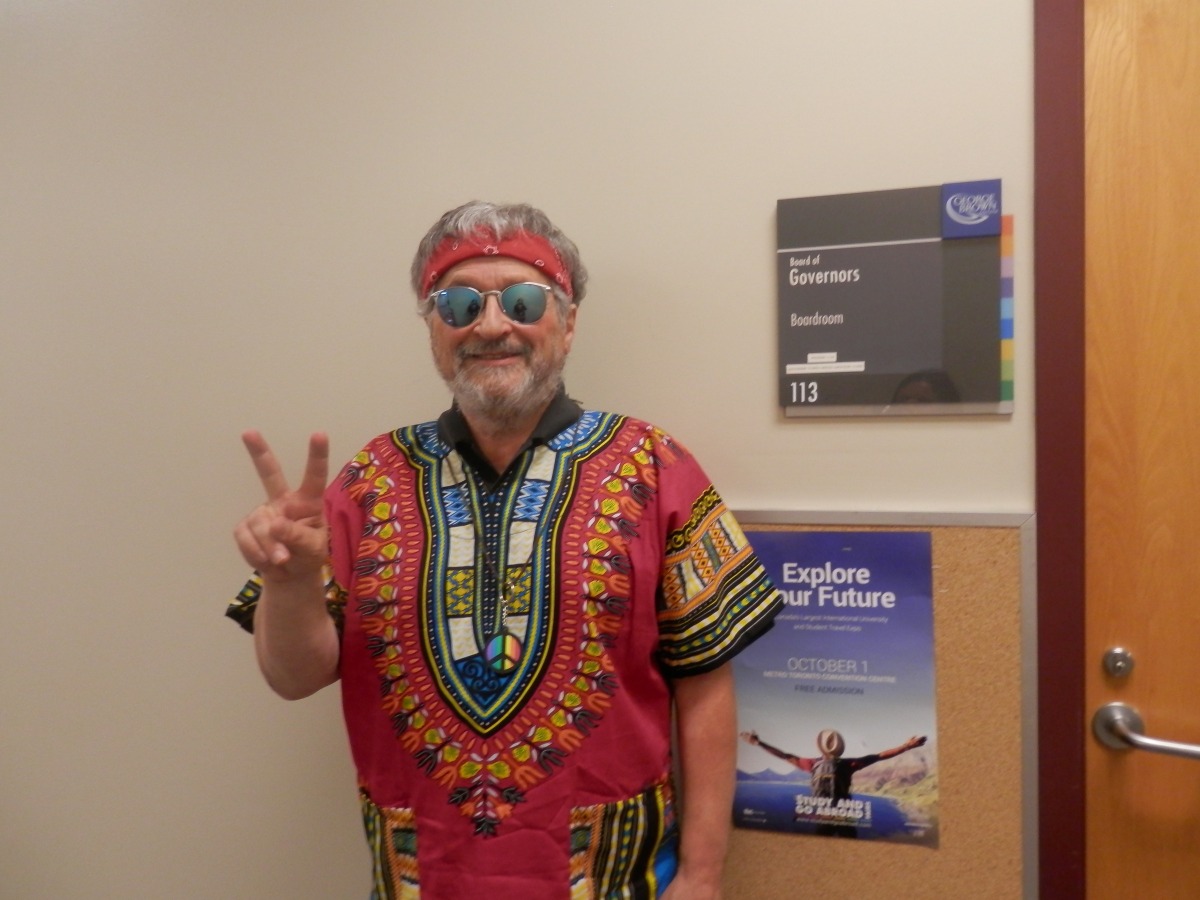In 48 years teaching, Howard Gerhard has seen the college and its students transform
In 1968 when George Brown College first opened its doors it had 2,009 students and 187 professors.
A year later, George Brown added the now defunct College Street campus, where Howard Gerhard recently started working as an English as a second language teacher.
While he’s ended up teaching at George Brown for 48 years, Gerhard said that at the beginning of his career he wasn’t sure that it was what he wanted to do.
“Now, I’m not gonna lie to you and say that when I first began at George Brown I said ‘Teaching, that’s my vocation, that’s what I want to do, that’s been my lifelong dream,’ ” he said. “It’s not the case.”
Gerhard learned to teach English as a way to support himself when he was travelling through Europe. He wanted to be a musician and a poet, but starting a family got in the way.
“I got married, had kids, and that takes up your energy,” he said.
Gerhard said that when he got some room to breathe, he found that teaching at the college was “exactly where he wanted to be.”
And he kept teaching for nearly half a century. Today, Gerhard, is a professor of liberal studies, and one of the longest serving faculty members at George Brown.
“He has seen the college in many different ways and he has a deep understanding and a deep appreciation of the journey that the college is going on,” said Michael Cooke, co-chair of the 50th anniversary committee at George Brown and former vice-president academic.
The college has gone through many changes during Gerhard’s time. Multiple strikes, new buildings, and different administrations are some of the milestones. The student population has also grown to more than 30,000 full and part-time students.
Through technology students themselves have transformed as well, according to Gerhard. Technology has changed the way students communicate and learn, affecting the structure of the lectures.
“If you use Twitter a lot you start to think in 140 characters,” he said. “Not only that, but when you are texting, the software gives you ideas so you don’t have to spell the word out, you start to think the way the machine wants you to think. That’s a problem.”
At the beginning of the college, there was little technology in the classroom. Today it’s different, and making the shift has been tricky for Gerhard.
“Students are really caught up in the technology, it’s part of them, it’s almost a part of their brain, and it creates challenges,” he said. “I don’t know quite how to fit that into the classroom.”
Gerhard has been trying different methodologies to incorporate some of the technology while maintaining a classroom situation.
“I think the challenge for the student is to decide what he or she wants. Do you want an online course? Because that has its own challenges in terms of time management, or do you want a classroom experience?”
Cooke, who joined George Brown in 1994, agrees that technology has changed the way students learn and teachers teach.
“Students have such access to information technology, but don’t necessarily know how to use it effectively for learning,” he said. “So, how do you lead learning and information technology? If you’ve been a long-time professor that’s a special challenge.”
What classrooms look like in the near future, and how learning is promoted remains to be seen. But Gerhard thinks it will take a lot of time and consideration on the part of students and teachers, to make a learning environment that works.
The next years at the college will see some of these changes to the learning environment, and according to Cooke, Gerhard might be an important piece in this transformation.
“He is better placed than almost anybody in the college to tell us our story, to remind us where we came from, to remind us how we’d changed, and to help us think about where we want to go in the future.”


